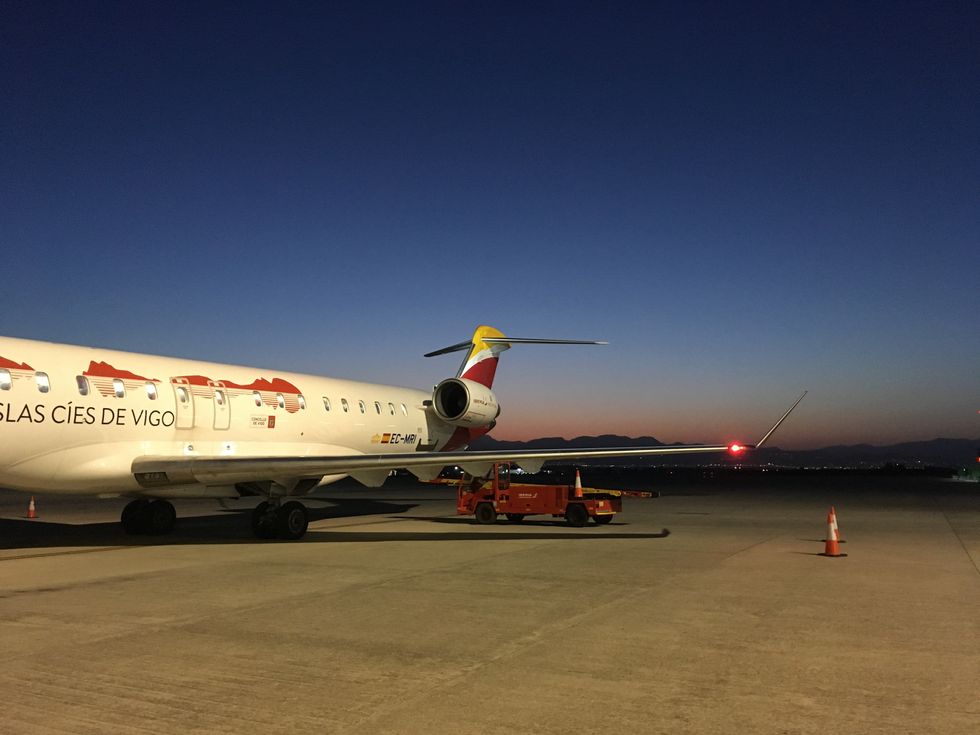This summer I have become very adept at travel — whether that means public transportation, taxis, Ubers or flights. Being in Spain for a month, it was necessary to become familiar with airport customs, the subway, the bus system and what walking distance was just too far.
But nothing about my travel experience during my Spain trip prepared me for what happened on my international flight that was supposed to fly me across the Atlantic ocean from Madrid to Charlotte, North Carolina.
This was my second flight of the day out of three to get myself back into Dayton, Ohio, and included three other students from my study abroad trip. We met at the airport after our first flights, and congregated at our gate, sipping Starbucks coffee and reminiscing about our incredible month in Spain.
We eventually boarded our flight, filing into the huge international plane, waving to each other as we found our seats. I hauled my bulging carry-on suitcase into the overhead storage and settled into my seat. Sliding on my fuzzy socks and popping in my earbuds, I prepared for a chilly eight-hour flight spent watching endless movies, eating tiny pre-packaged salads and drinking gallons of water.
As the plane's engine began to rev, my eyes fluttered shut and I fell asleep, tired from waking up so early and fatigued from all of the travel. I wasn't asleep for long. Our plane had only been in the air for about half an hour when the sounds of commotion roused my consciousness. I blinked wildly, completely disoriented, and I looked around the plane, searching for the source.
Some of the passengers were standing up two rows behind me, calling for assistance from the flight attendants.
"Move, move!" barked a flight attendant who was barreling down the aisle towards the scene. I still could not quite make out who or what the problem was — my head rest was too tall and all I could do was peer between the two seat cushions. The flight attendant bent down at one of the seats behind me, and after a moment his head shot up, his eyes were sharp and determined.
"She's not breathing! I need more flight attendants and the emergency medical kits! Everybody sit down!" he ordered, waving some of the attendants over, giving them orders. Some ran back towards the cockpit. I put a hand over my mouth. The woman in the aisle seat next to me whipped her head around, her eyes wide with shock. We shared a moment of mutual panic, and then she broke it — returning her gaze to the situation behind us.
Over the PA system, an announcement blared: "We have a code red situation. All passengers please remain seated so emergency medical personnel and flight attendants can quickly maneuver about the plane. Any EMTs or doctors with medical training please report to aisle two, row 14. We will be turning the plane around and landing back in Madrid so the passenger can receive medical attention."
The plane stirred with gasps and murmurs, and as doctors and nurses flooded into my aisle, I could not bring myself to look behind me. My hand was still over my mouth, tears welled up in my eyes and all I could picture was the moment when the CPR efforts would revive the passenger and everyone on the plane would clap in celebration. And I waited for that moment for almost two hours, as this passenger's life balanced precariously on the decisions and efforts of the heroes on the plane.
As we waited, I began to notice a few Americans on the opposite side of the plane slowly raising their phones, cameras facing the scene. Some had the airline brochures covering half the device, some were more blatant — unashamedly trying to find the best angle to capture everything with. I gaped.
How could these people think it's appropriate to film this person's fight for life?
How could they transition from shock to an urge to film so quickly?
What was going through their minds — views and popularity on social media?
How have we become so desensitized?
There is no disputing the fact that Americans are increasingly desensitized to violence. We are bombarded with it on social media and the news every day. We crave violence and action in the movies we watch, in the video games we play. But now it's happening in the real world — and it's happening everywhere, motivated by a legitimization of hate and discrimination by the federal administration.
Just this past weekend, mass shootings occurred in El Paso, Texas and Dayton, Ohio. Twenty-two people killed in an El Paso Walmart and nine killed in Dayton's Oregon District. Dayton is my home, and this shooting in the Oregon District reminded me that these shootings are not just on the TV screen or on my phone's news alert apps. They are real — and these are real losses of life.
The passenger on my flight died while she was being transported off the plane and into an ambulance. It was so hard for me in that moment, to fathom that this person was alive when the plane took off and had died just two hours later.
This detachment from reality is detrimental to not just Americans — but to all human beings. If we allow this normalization of violence and legitimization of hate to fester, more people will die. We have to stop sending prayers and sweeping the last shooting under the rug. We have to be more respectful and empathetic to death — and stop videotaping the last hours of someone's life.








 The minimum wage is not a living wage.
StableDiffusion
The minimum wage is not a living wage.
StableDiffusion
 influential nations
StableDiffusion
influential nations
StableDiffusion












